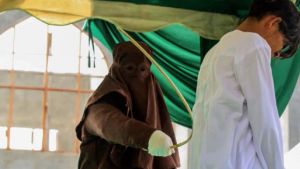JAKARTA - The cycle of harassment or cycle of violence was the first documented concept in the 1970s by psychologist total E. Walker.
Through extensive observations and interviews with women who have experienced abuse and domestic violence. Walker identifies several stages that tend to recur in violent relationships. Namely, building tensions, incidents of violence, reconciliation, and a calm phase.
This model of the cycle of violence has been a reference for mental health professionals, but it is not aimed at covering all experience related to violence. Stages of the harassment cycle may not always occur in the same order, or some of them may not occur in some cases. For more details, see the following explanation.
During the strain stage, couples who commit violence will begin to show signs of harassment. As well as violent behavior that slowly begins to increase in intensity and frequency.
This can happen because of external stress triggers such as financial problems, interpersonal challenges in the workplace or other environments, or health challenges. The behavior directed by violent perpetrators is usually in the form of emotional explosions, irritability, impatientness, and easy anger.
When tensions began to appear, victims of violence began to feel anxious. Victims usually start to be careful with words and actions taken to ease tensions between perpetrators of harassment and prevent incidents of violence.
Incidents of violence occurred because problems in the strain phase could not be overcome. This stage is an effort by violent perpetrators to openly regain their power and control.
Incidents of violence may differ between relationships with other relationships. This can include:
Incident stages can increase in every cycle. For example, at the beginning of the cycle there was only intimidation and humiliation. But over time there can be physical violence.
VOIR éGALEMENT:
After the incident of harassment, the perpetrator felt the tension began to subside. This can be a very contradictory experience for victims of violence. After the tension subsides, the perpetrator feels the desire to improve his behavior. The perpetrator will apologize, shower the victim with affection, or promise not to commit violence again.
During this phase, couples who commit violence will appear to truly regret their actions and are committed to improving themselves. Because of a sense of care, it is not surprising that the victim tends to believe what the perpetrators say and gives the perpetrator another chance.
It is possible that the perpetrators of violence began to do things that seemed romantic, supportive, and full of affection during the reconciliation stage.
During the calm phase, your partner will continue to pay attention. However, you will see changes in the nature of your partner from the beginning of regret to self-defense. Rough behavior is usually minimized in this phase. But you will see your partner start doing things like;
Victims of violence are usually confused in this phase. The reason is, couples seem to want to improve the situation, but it's like there is a tone of denial that cannot be understood. After a calm period, it is possible that the victim will experience tension again, because the cycle of harassment has started again.
From the Psych Central page, Wednesday, October 18, it is stated that the stages of violence may not always be the same for everyone. But for sure, this model can help describe how violent behavior in relationships can occur and repeat itself over time.
The English, Chinese, Japanese, Arabic, and French versions are automatically generated by the AI. So there may still be inaccuracies in translating, please always see Indonesian as our main language. (system supported by DigitalSiber.id)













